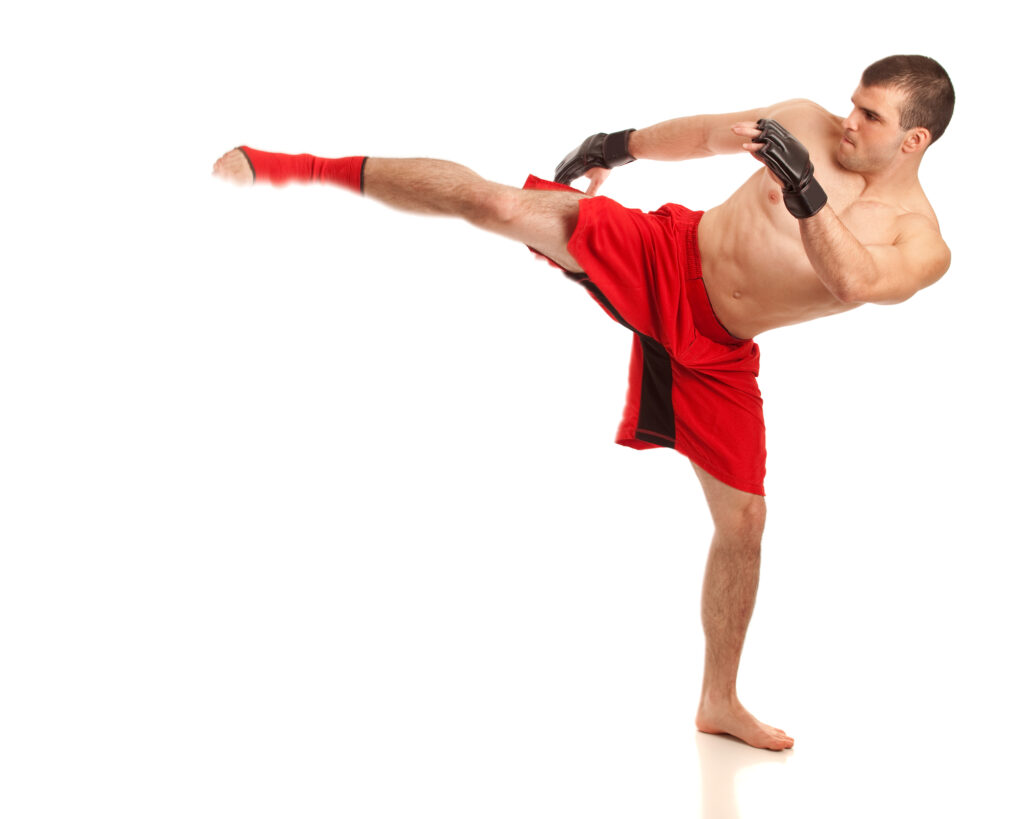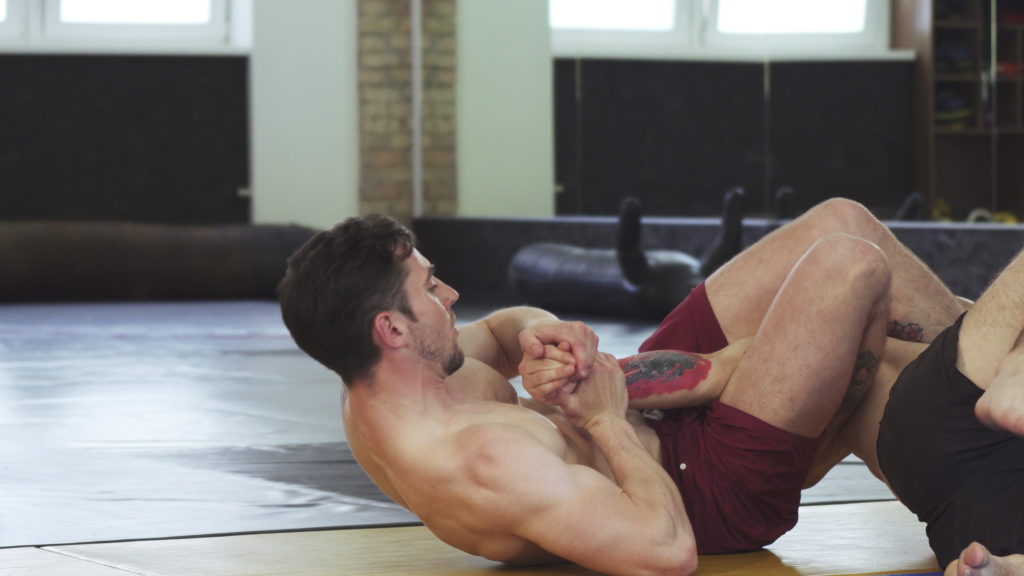Muay thai as a well established foundation in MMA and a lot of reputable trainers with a muay thai background such as Duke Roufus and Firas Zahabi have had notable success in the UFC.
Striking in MMA is always evolving and includes strong influences from kickboxing, boxing, Taekwondo and KArate.
Muay thai in particular, is seen as an essential in Mixed Martial Arts for very good reasons.

Muay thai is recognized as one of the most effective striking disciplines and for using all 8 limbs. This makes muay thai especially useful in the striking aspect of MMA.
Pioneering Muay Thai Fighters in MMA
The earliest representation of muay thai in the UFC and most likley MMA was muay thai fighter Orlando Wiet fighting in UFC 2 in 1994.
Wiet is originally from Suriname and moved to Europe at a young age. Wiet fought in Thailna dunder local Thai promoter Songchai Rattanasuban.
Wiet never competed in the UFC again after UFC 2 and therefore is not so well known in the UFC world.

Another muay thai fighter and Thai national, Rambaa Somdet from Pattaya is one of the first real muay thai fighters of Thai origin to have success in MMA.
In 2019, Loma Lookboonme became the first Thai national to sign with the UFC. As a well established female muay thai fighter in Thailand, Loma now representd Thailand as well as muay thai in the UFC.
Adapting Muay thai for MMA
Some of the most prominent MMA fighters in the UFC and other prominent MMA promotions have well known muay thai backgrounds.
MMA in Thailand is still relatively new and not nearly as popular as muay thai or boxing as a spectator sport.
This is continuing to change with more Thai fans watching MMA thanks to notable fighters from muay thai who have had MMA success such as Loma and Dejdamrong.
Joanna Jedrzejczyk – Former muay thai world champion and UFC champion
Donald Cerrone – former muay thai US champion and UFC vetera
Joanne Calderwood – former kickboxing and muay thai champion and current UFC contendor
Valentina Schevvhevnko – former muay thai world champion and UFC champion
Jose Aldo – former UFC dominant champion and muay thai champion
Jeff Chan – Pro MMA fighter with excellent muay thai adapted for MMA with a strong social media presence and shares his knowledge
Muay Thai Strengths for MMA
Elbows
Elbows are a specialty of arts such as Muay Thai, Khun Khmer and Lethwei.
Apart from the downward ’12 to 6′ elbow, the same muay thai elbow variations are available for use in the UFC and other MMA contests.
UFC fighters such as Anderson Silva and Alan Belcher have made good use of the elbows in their UFC matches influenced by muay thai striking.
Knees
Another strength of muay thai that transfers well from muay thai to MMA are the knees.
The full arsenal of muay thai knees are available for use in MMA.
Utilizing the clinch from muay thai and transitioning from elbow to knees and vice versa is a devastating tactic that is very damaging and can work well in MMA.
Sweeps and dumps
Sweeps and dumps are well used in muay thai to score and put an opponent on the floor.
These same sweeps from the clinch and take downs from caught kicks can be well used in MMA to get the fight to the ground.
Strong Clinch
Muay thai regularly takes place in the clinch,
Clinching is a big part of muay thai and hours per week are spen in clinch sparring.
Upper body grappling for inside position and chaining clinching with knees adn elbows are a major part of the clinch game in muay thai.
Muay Thai Weaknesses in Mixed Martial Arts
Groundwork
Ground work of course is the main weakness of muay thai in Mixed Martial Arts. There is no groundwork in muay thai. Once a fighter is on the floor whether a knock down or not, the ref stops the fight.
The downed fighters or fighters will get back up to their feet and resume fighting.

High Upright stance
The symbolic high muay thai stance with hands high can be well exploited by grapplers and wrestlers to shoot in for takedowns.
Dejdamrong – former Lumpinee Champion and former ONE FC champion points out that a major difference between muay thai and Mixed Martial Arts is the stance and defense.
The former Lumpinee Champion described having to adjust his normal muay thai stance to be lower and knees more bent closer to the ground than the traditional muay thai stance.
The main reason being to defend take down attempts.
Traditional Slow Start Style of Muay Thai
In MMA and especially high paced UFC fighters, action can spark from the get go and even end very quickly with a KO or quick submission.
Muay thai traditionally starts very slow in comparison.
The first two rounds of a muay thai fight are seen as ‘feeling out’ rounds and it is said that Judges often overlook scoring from the first two rounds of a muay thai fight.
This ‘slow start’ approach can still be used in Mixed Martial Arts – just don’t expect your opponent to also start slow the same as they do in muay thai.
Wrap UP
Muay thai has been an important part of Mixed Martial Arts for some time now.
Beginning back in UFC 2 in 1994 and transitioning to the first ever Thai national to sign with the UFC in 2019 – it has come a long way.
Muay thai has gained worldwide respect and recognition as a simple but effective striking based art -thanks in part to Mixed Martial Arts and the UFC.
Today muay thai is taught in many traditional gyms set up around the world as well as part of larger Mixed Martial Arts gyms and many more people now have access to the Art of 8 Limbs’.



